On a recent visit to the Gerrard Indian Bazaar area in Toronto, I was fascinated once again by all the beautiful clothing on display. There were beautiful sarees and lehengas in different fabrics, designs, and colours. All the images below were taken there. The word sari and saree are synonymous. I had the pleasure of wearing a sari just once in my life and felt good wearing it – lots of fabric and lots of elegance!
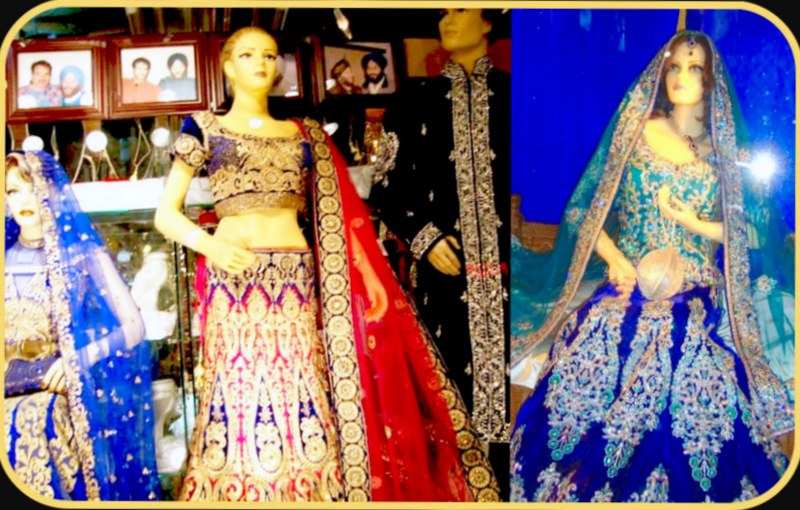
Sari, this word is derived from the sanskrit word ‘sati’. Sati, as you know, means a strip of cloth. This sound first evolved into ‘sadi’ and then into ‘sari’.
There are some indications which suggest that the sari originated in the Indus valley civilization in 2800 to 1800 BC. That is a long time back. Just imagine the women then draping themselves in a sari. Sari has certainly come of age.
(nishamadhulka.com)
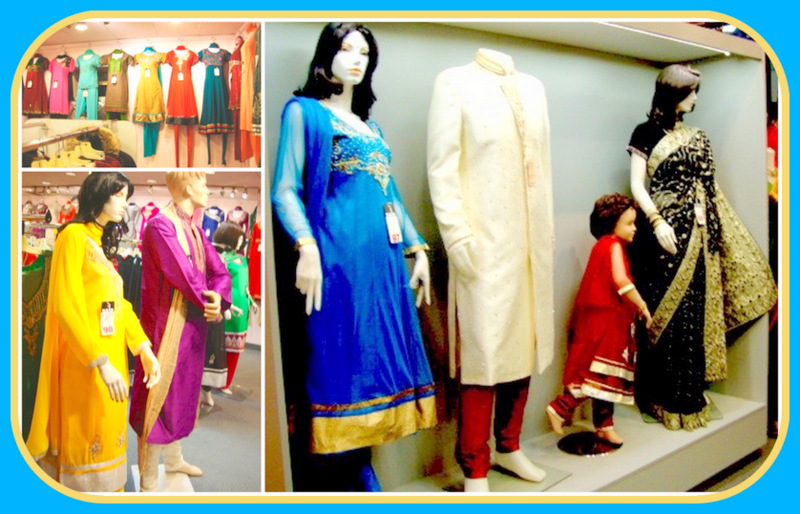
As you can see from the above image, just as popular as the sari is the lehenga. This beautiful ethnic dress consists of trousers, a long well-fitted blouse, and a long scarf or dupatta to complete the attire. “Though it is difficult to trace back the history, the lehenga is believed to have originated in the Mughal Era. In the Mughal times, ladies used to wear this attire on all special occasions. During that time, it was believed that that lehenga choli had all the qualities that would define Indian exquisiteness in its purest form.” (indiaemporium.com) I had the wonderful opportunity of attending a wedding in India and bought a lehenga outfit there to wear. It was beautiful and the ultimate in comfort. I can see why many East Indian ladies choose to wear this type of garment.
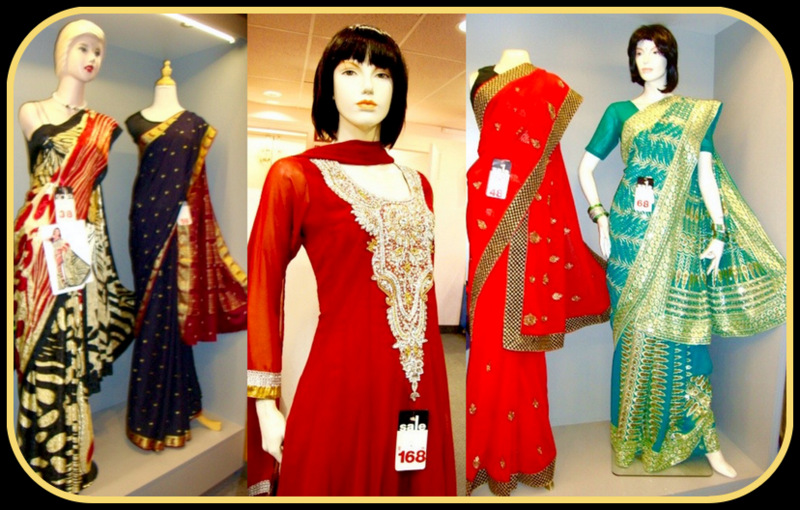
Because of my interest in Indian women’s wear in particular, I decided to do a search to see if there was any material that was available on this topic. To my delight, I found there are many resources and I will share these with you below.
SARIS & INDIAN FASHION & TEXTILE RESOURCES
The Sari
by Mukulika Banerjee and Daniel Miller
Saris: Tradition and Beyond (Reprint Edition)
by Rta Kapur Chishti (Author), Martand Singh (Editor)
The Grace of Four Moons: Dress, Adornment, and the Art of the Body in Modern India (Material Culture) Hardcover – January 17, 2008
by Pravina Shukla (Author)
The Sari (Styles, Patterns, History, Techniques) by Linda Lynton
The Fabric of India by Rosemary Crill
Indian Textiles: The Karun Thakar Collection by John Guy, Rosemary Crill
Indian Textiles by John Gillow & Nicholas Barnard
Handmade in India: A Geographic Encyclopedia of India Handicrafts by Aditi Ranjan & M.P. Rangoon, Editors
Textiles and Dress of Gujarat by Eiluned Edwards
Indian Fashion: Tradition, Innovation, Style by Arti Sandhu (Author)
Contemporary Indian Fashion by Fedrico Rocca (Editor)
Woven Cargo: Indian Textiles in the East by John Guy
The Whole 9 Yards: How To Wear An Indian Sari Kindle Edition by Kalpana Shaw
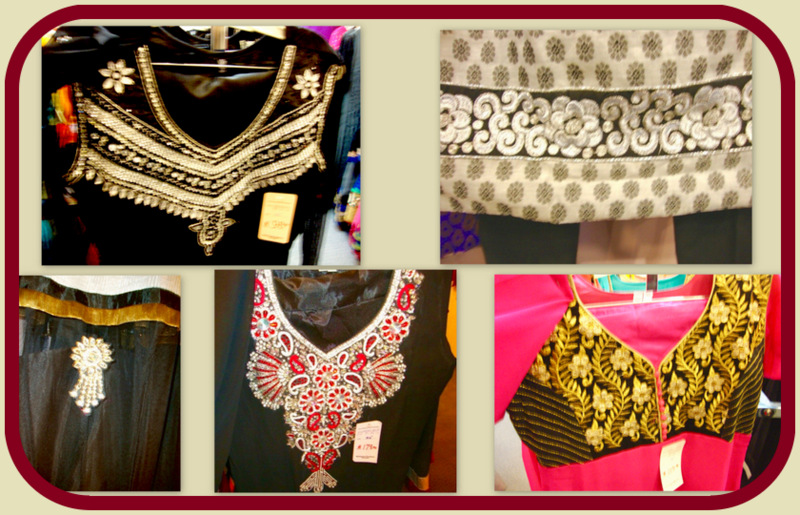
All the above books are available at Amazon but you may want to check out your local library first to see if you can borrow any of these from there. That’s what I’m going to do.
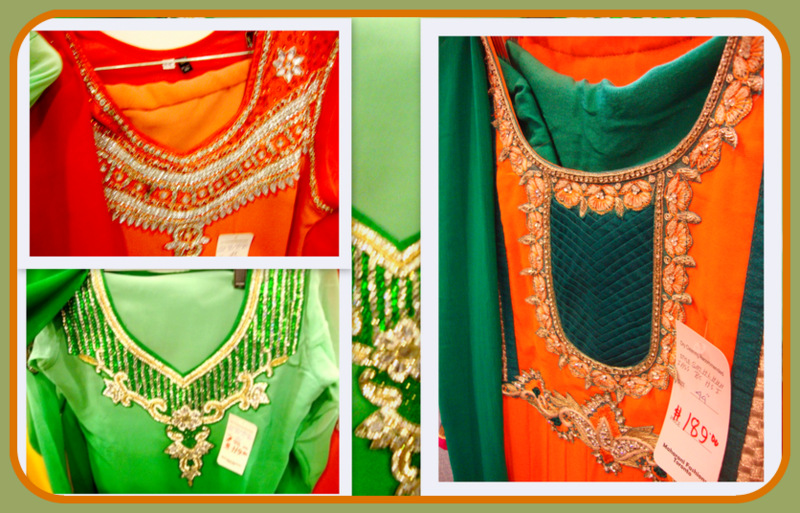
There are a few children’s books on saris as well and the list can be found below.
CHILDREN’S BOOKS ABOUT SARIS
Mama’s Saris by Pooja Makhijani (Author), Elena Gomez (Illustrator)
My Dadima Wears a Sari by Kashmira Sheth (Author), Yoshiko Jaeggi (Illustrator)
My Mother’s Sari by Sandhya Rao (Author), Nina Sabnani (Illustrator)
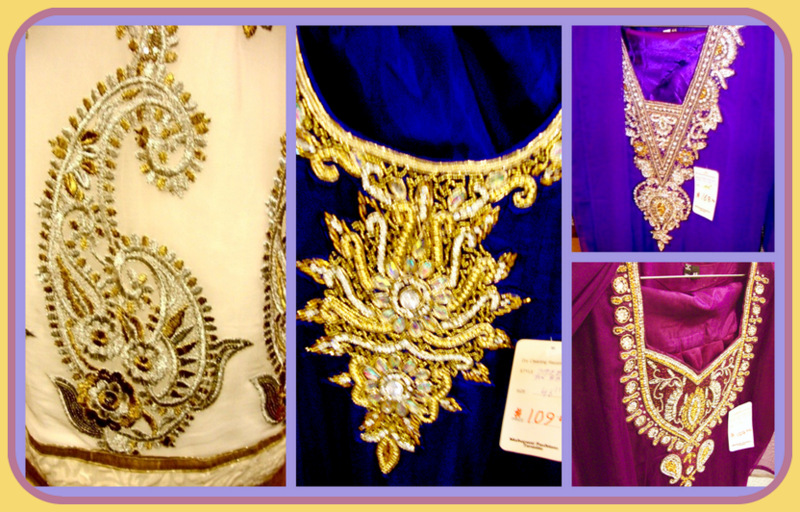
The above collage shows some more images of the embellishments that were on the outfits I saw on my visit to the Gerrard Indian Bazaar area. It never fails to fascinate me how “rich” these outfits look with all the different types of work on them.
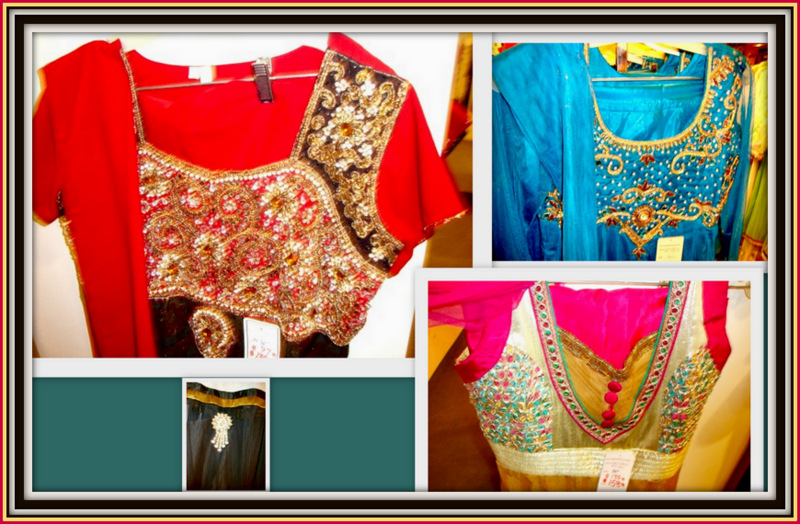
The above collage also shows some more of the detailed kinds of bead, rhinestone, and embroidery work that is found on saris and lehengas. Since no East Indian woman gets dressed up without wearing jewelry, I thought that I might like to peruse some books on East Indian jewelry. The list below are the ones that I thought I might like to take a look at.
EAST INDIAN JEWELRY RESOURCES
Traditional Jewelry of India by Oppi Untracht (Author)
Indian Jewellery by Barnard Nick (Author)
Treasury of the World: Jewelled Arts of India in the Age of the Mughals by Manuel Keene & Salam Kaoukji
Bejewelled: Treasures of the Al-Thani Collection by Susan Stronge (Author)
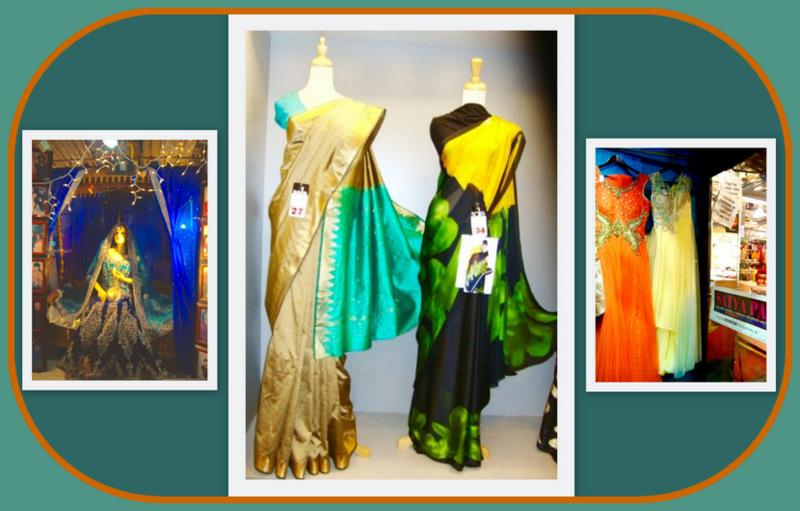
Hope you enjoyed all the images and that you too might want to delve into some of these resources for further information.
